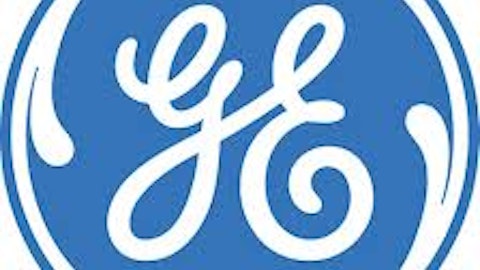The bank has asset-sensitive balance sheet, which means that rising interest rates bode well for the corporation. Thus, as the economy picks up steam, the market could start pricing in higher interest rates, which will lead to expansion in valuation of Cullen/Frost Bankers, Inc. (NYSE:CFR)’ shares. Currently, however, the bank is trading at a 60% premium to book value, which matches the bank’s five-year average. CFR has a return on average equity of 10%. Last quarter, billionaires Ken Griffin and Jim Simons significantly boosted their stakes in the corporation.
In fact, in early April, General Electric Company (NYSE:GE) announced intention to acquire Lufkin Industries Inc. (LUFK), a company selling oilfield pumps, for $2.98 billion. This acquisition will turn GE’s energy business segment into the third largest, nearly doubling its revenues. The objective is to capitalize on the shale oil and gas boom, as “General Electric Company (NYSE:GE) expects the oil pump market to grow at 12% to 13% per year for at least the next decade.” Aside from growth, the stock is also desirable from the shareholder value perspective, as the company sees returning cash to shareholders as its top priority. General Electric Company (NYSE:GE) is priced at 14x forward earnings, slightly below its respective industry. Last quarter, billionaire Ken Fisher held more than $636 million in this stock.
Last year, its revenues increased 3.2% to $8.9 billion, but adjusted EPS from continuing operations contracted 4.6%, partly due to legal expenses and loss contingencies. This fiscal year, however, the company expects to resume growth in EPS, projecting EPS expansion of between 2.7% and 8.1% from the year earlier, on top-line growth of between 2% and 4%. The company’s acquisition of Movianto has given it market presence in Europe, and will be the main driver of sales growth in the near term. Long-term growth will be driven by tuck-in acquisitions and innovation. In terms of valuation, OMI has a below-industry forward P/E of 16.9x and a price-to-book of 2.1 (versus 3.1 for its industry). Owens & Minor, Inc. (NYSE:OMI) is popular with small-cap value investors Chuck Royce and David Dreman.
Why should you pay attention?
There are many different investment philosophies out there, but in general, market participants can be grouped into three categories: value, income, or growth-seeking investors. While value investing is sometimes harmed by short-term lulls in the broader indices, and growth investing has the potential for big misses if you don’t know how to analyze that growth, income-oriented bulls have the stability of dividends to help them rest at night.
Sure, these stocks may not blow you away in the other categories, it’s their dividend-paying potential that makes them attractive, and judging by the factors mentioned above, it looks like they’ll appreciate enough to make them solid net investments as well.
Disclosure: none

